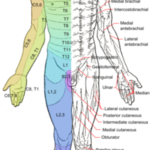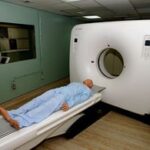Alzheimer’s disease causes healthy brain tissue to break down and degenerate, with the loss of abilities leading to dementia. Alzheimer’s disease robs people of their memory and mental skills, and it affects four and a half million Americans. Those with Alzheimer’s disease are expected to grow in numbers as the population gets older, and although there is no cure at the moment for Alzheimer’s disease, research has made some advances.
Like many diseases, the exact reason for Alzheimer’s isn’t clearly known, but what science does know is that those with this affliction suffer the death of brain cells. Neurons, which are nerve cells in the brain which produce chemical and electrical signals that are instrumental in helping you think, begin to die off in Alzheimer’s patients. This loss of neurons lowers the brain’s ability to perform many of its functions. The illness is named after a German doctor named Alois Alzheimer, who in 1906 studied the brain of a woman who had died after suffering from dementia for years. Alzheimer found that the woman had strange clumps and knots of brain cells present; the clumps came to be known as plaques and the knots as tangles.
Research has shown that plaques are made up of a protein that builds up between neurons in the brain. Tangles are comprised of a protein called tau that changes during the course of the disease, causing threads of the material to twist and tangle, damaging neurons. Alzheimer’s disease victims sometimes have an inflammation of the brain, the result of immune cells trying to rid the area of dead and dying cells, but scientists don’t know if this hurts or helps brain neurons. Ironically, the only way that Alzheimer’s is diagnosed with certainty is when an autopsy is performed on someone suspected of having it.
The symptoms of Alzheimer’s disease advance in severity as the ailment progresses. The disorder differs from person to person in its effects on the brain, but most people with Alzheimer’s have bouts of forgetfulness at the onset, forgetting recent happenings and where they put things. This will worsen over time, to the point where the person forgets the names of members of their family and the names of common objects. The afflicted person often realizes that their memory is going, making the disease that much more insidious, and eventually the person will have little or no recollection of anything.
Trouble balancing a checkbook, counting money, or anything that requires abstract thinking is a potential warning sign of Alzheimer’s. Searching for the right word time and again is another, and in the end, reading and writing are difficult if not impossible. No sense of time or what day it is, or where they are, is another awful result of Alzheimer’s, and those with it are at risk of wandering around aimlessly. The inability to solve simple challenges such as what to do if the water in a sink is rising too high are a trademark of the disease, and it becomes almost impossible to do anything that requires any planning. Mood swings and changes in personality can be exhibited, some borne out of frustration with the loss of their skills and memory. Depression and inappropriate behavior can follow. These changes are all gradual and may not be picked up on right away. Once diagnosed with Alzheimer’s, a person has an average survival rate of eight years, but some can succumb sooner while others can live twenty years more.
Often in the beginning stages of the malady, people can manage on their own, but as it progresses, those with Alzheimer’s disease need constant supervision and care, until eventually they are totally dependent on others. The dementia that accompanies Alzheimer’s was once thought to be a sign of aging, and thought to be normal, but we now know that this is not the case. Because women live longer than men in most cases, they are more liable to come down with Alzheimer’s. It usually affects those over 65 years old, but can begin in rare circumstances in people much younger. Your chances of having it increase in proportion to your age once you get past 65. While less than five percent of those from 65 to 74 years old have it, nearly fifty percent of those 85 and up contract Alzheimer’s. Environmental and lifestyle factors are being looked into by researchers to see if they have any connection to who gets the disease.
In the majority of cases, those that die from Alzheimer’s expire from a secondary cause, with pneumonia a major culprit, as difficulty swallowing causes food and drink to be inhaled into the lungs, precipitating infections. The victim may also become incontinent, and the necessity of catheters increases the risk of infections in the urinary tract. The complications stemming from frequent falls because of the loss of coordination and disorientation cost many Alzheimer’s disease sufferers their lives as well. There is no cure for Alzheimer’s, just some medications aimed at reducing the loss of neurons and drugs to alleviate some of the many symptoms associated with it. Science recently thought it had come up with a viable vaccine to prevent Alzheimer’s, but it caused brain inflammation in many people and was taken off the market. Most Alzheimer’s patient reside at home, with the family providing care, which can exact an enormous toll on them as well.
Using memory aids, such as lists of daily activities and instructions on how to do certain tasks, can be helpful to someone with Alzheimer’s, as can establishing patterns. Going to bed at certain times, in a quiet environment, with a night light on can decrease disorientation. Alzheimer patients frequent wander, even leaving home and getting lost, without any way to remember where they came from. Close monitoring of this possibility is needed, and devices such as a bracelet with the person’s name, phone number, and address can be worn. Simplifying everyday tasks and communicating to an Alzheimer’s patient slowly and directly can help, and it pays to make the home safe by locking medicine cabinets, taking electrical appliances from the bathroom, and employing other safety measures. Exercise certainly cannot hurt, and can only improve the person’s cardiovascular system and perhaps lessen the effects of depression and other Alzheimer’s related symptoms. All legal matters should be taken care of as soon as a person is diagnosed, as they will not be able to make informed decisions once the disease advances. There is no way to prevent Alzheimer’s disease, but there is a course of thinking that it can be delayed by staying mentally active.







